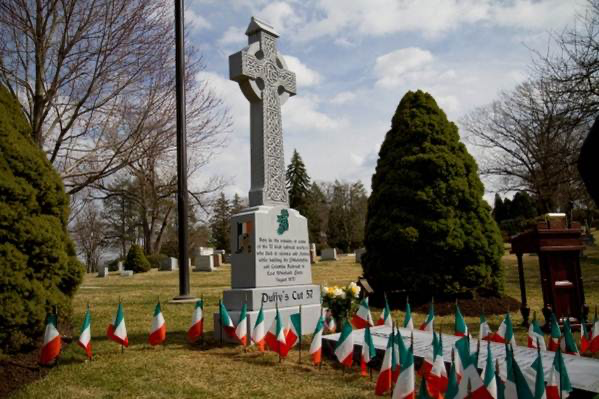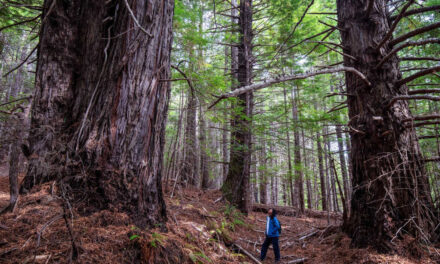Gina Rufo ‘24, Staff Writer
Malvern, Pennsylvania is haunted.
From the spectors of Valley Forge to the spirits that linger at the Paoli Battlefield Historical Park and the souls of the railroad workers at Duffy’s Cut, Chester County has a rich history filled with ghost stories. Immaculata University just happens to be at the center, making it a hotbed for paranormal activity.
Dr. William Watson experienced his own ghostly encounter once, seeing neon-like figures who disappeared before his eyes. It was only after this that his brother showed him a document that came into his possession through their grandfather, who himself got it from his employer, Martin Clement (President of the Pennsylvania Railroad (1935-1949)). This document detailed the Duffy’s Cut story and Dr. Watson was surprised to learn that the location was only minutes away from the University!
Dr. Watson is not the only person to see spectral figures of the Cut – in fact, the very first ghost sighting is recorded as early as September 1832 – just one month after the tragedy! This record claimed that the figures were “fiery” – a 19th century equivalent to the “neon” effect Dr. Watson saw. This document, as well as numerous other ghost sightings in the area, supported Dr. Watson’s own experience, and was a catalyst for the Duffy’s Cut project, which began excavations in August 2004. The team was composed of Dr. William Watson, his brother Rev. Dr. Frank Watson, Earl Schandelmeier and the late John Ahtes.
The dig wasn’t quick and easy – there was a lot of pushback from Amtrak, the homeowners, and people in the community who denied that there was anti-Irish, anti-Catholic sentiment in the area. Despite these challenges, the team continued to fight for the project, demanding justice for the slain workers and uncovering the first human bones on the 20th of March, 2009. Although the voices of the opposed were loud, the voices of the supporters were louder, including members of the Emerald Society, the United States and Irish Governments, and actor Liam Neeson, who wrote a letter of support and interest in participating in a film about Duffy’s Cut.
Dr. Watson had known about the Northwood location since a letter arrived at his office in 2003 about Samuel Pennypacker’s (Governor of PA 1903-1907) history of Downingtown, which claimed that there was an Irish railroad worker grave located there. This claim was backed up by a village record newspaper that came out of West Chester at the time that said one of Duffy’s men ran westward along the unfinished track bed to the line of East Bradford in East Caln to another railroad camp, bringing cholera with him. The discovery of another Irish worker mass grave in the area would be huge, but despite the team knowing the story, they were not able to exploit it as a dig site because they were focusing on Duffy’s Cut. In 2006 they were able to use ground penetrating radar to discern the general area of the grave, but it wasn’t until two weeks ago that they were able to shift their focus, when they learned of the original entrance to the cemetery, a wooded area that Dr. Watson believes may be the location of the bodies, due to the way body decomposition affects soil and possibly tree growth.
At this time in the dig, no skeletons have been found, but Dr. Watson is confident that discoveries will be made very soon. Once remains are uncovered, the dig will really gain traction, and then students can get involved! According to Dr. Watson, aiding in this dig is “the most important thing any of us could do”, and I couldn’t agree more.
When the bodies were first discovered at Duffy’s Cut the dig team became their legal guardians. If they are the parents of the workers, Immaculata students are their brothers and sisters. John Ruddy, the youngest worker, was only 18 when he immigrated and was murdered, and “students now are the same age as the workers would have been,” Dr. Watson said. Participating in this dig would be an incredible opportunity for Immaculata students because they would not only be contributing to something much bigger than themselves, bringing justice to the workers, but they would be able to experience history in a hands-on way in their own backyard.
The story and lore of the fate of the Irish railroad workers is what draws many to the Duffy’s Cut Museum on campus, including Professor Levi Fox, who said the museum is a “great education resource that many students really seem to appreciate.” But, what if students could be a part of the story themselves through the Northwood Cemetery Dig – a story that is different, but tragically intertwined, with Duffy’s Cut.
Thank you to Dr. Watson for sharing his story and that of the Northwood Cemetery Dig with me. For further information, visit the Duffy’s Cut Project Website (duffyscutproject.com), which has plenty of additional and intriguing photos, videos, and articles.
Photo by Dr. William Watson, courtesy of The Encyclopedia of Greater Philadelphia’s article, “Duffy’s Cut”, by Dr. William Watson (https://philadelphiaencyclopedia.org/essays/duffys-cut/)





